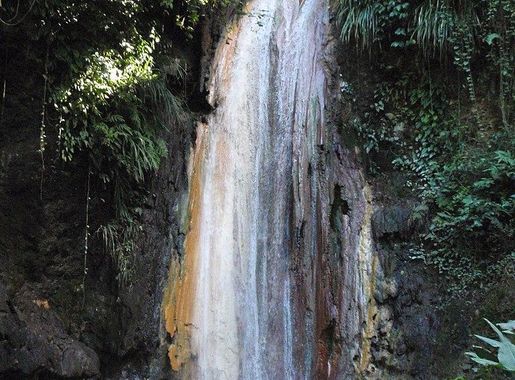
Dauphin: The Hidden Gem of Saint Lucia
Discover Dauphin, Saint Lucia - A serene village where natural beauty meets rich cultural heritage. Perfect for travelers seeking an authentic Caribbean experience.
Nestled on the northeastern coast of Saint Lucia, Dauphin is a quaint village that offers a tranquil escape for travelers seeking a blend of natural beauty and cultural heritage. This lesser-known destination is perfect for those who want to immerse themselves in the authentic Caribbean lifestyle, away from the bustling tourist hotspots. Dauphin is surrounded by lush greenery and pristine beaches, making it an ideal spot for nature lovers. The nearby Dauphin Beach is a serene stretch of sand where you can relax under swaying palm trees or take a refreshing dip in the crystal-clear waters of the Atlantic Ocean. For those interested in marine life, the coral reefs off the coast offer excellent snorkeling opportunities. The village itself is rich in history and culture. You can explore the remnants of ancient Arawak and Carib settlements, giving you a glimpse into the island's pre-colonial past. Additionally, the local community is warm and welcoming, often inviting visitors to join in traditional festivities and sample local delicacies. Don't miss out on trying the freshly caught seafood, prepared in a way that reflects the island's unique culinary heritage.
Local tips in Dauphin
- Visit early in the morning to catch the sunrise over Dauphin Beach for a truly mesmerizing experience.
- Bring snorkeling gear to explore the vibrant coral reefs just off the coast.
- Try to visit during a local festival to experience the rich culture and traditions of the community.
- Sample the local seafood, especially the freshly caught fish prepared in traditional Saint Lucian style.
- Hire a local guide to learn more about the ancient Arawak and Carib settlements in the area.
Dauphin: The Hidden Gem of Saint Lucia
Nestled on the northeastern coast of Saint Lucia, Dauphin is a quaint village that offers a tranquil escape for travelers seeking a blend of natural beauty and cultural heritage. This lesser-known destination is perfect for those who want to immerse themselves in the authentic Caribbean lifestyle, away from the bustling tourist hotspots. Dauphin is surrounded by lush greenery and pristine beaches, making it an ideal spot for nature lovers. The nearby Dauphin Beach is a serene stretch of sand where you can relax under swaying palm trees or take a refreshing dip in the crystal-clear waters of the Atlantic Ocean. For those interested in marine life, the coral reefs off the coast offer excellent snorkeling opportunities. The village itself is rich in history and culture. You can explore the remnants of ancient Arawak and Carib settlements, giving you a glimpse into the island's pre-colonial past. Additionally, the local community is warm and welcoming, often inviting visitors to join in traditional festivities and sample local delicacies. Don't miss out on trying the freshly caught seafood, prepared in a way that reflects the island's unique culinary heritage.
When is the best time to go to Dauphin?
Iconic landmarks you can’t miss
Sandals Grande St. Lucian
Discover the epitome of luxury at Sandals Grande St. Lucian, a breathtaking resort hotel in St. Lucia ideal for romantic getaways and unforgettable experiences.

Saint Lucia
Explore Saint Lucia, a Caribbean gem known for its stunning landscapes, vibrant culture, and exquisite beaches, perfect for every type of traveler.
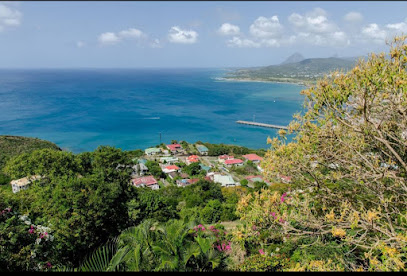
Sugar Beach, a Viceroy Resort
Experience unmatched luxury and natural beauty at Sugar Beach, a Viceroy Resort, surrounded by the iconic Pitons in St. Lucia.
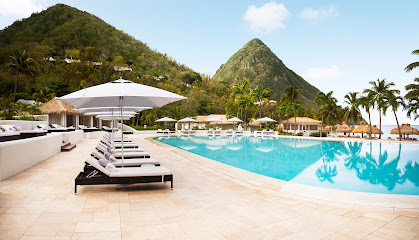
Adventure Tours St Lucia
Discover breathtaking landscapes and vibrant culture with Adventure Tours St. Lucia—your gateway to unforgettable island adventures.
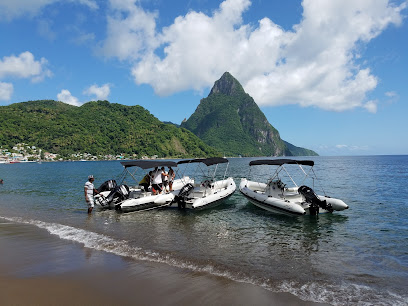
Saint Lucia National Trust
Discover the rich cultural heritage and stunning landscapes at Saint Lucia National Trust - a must-visit for every traveler.
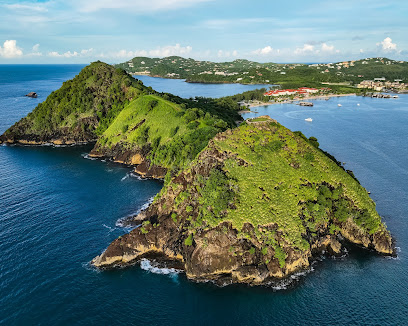
Naked Fisherman Restaurant
Discover the essence of Caribbean dining at Naked Fisherman Restaurant, offering fresh seafood and stunning ocean views in St. Lucia.
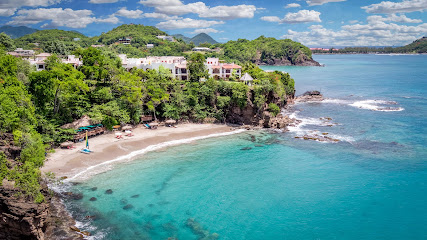
Morne Coubaril Historical Adventure Park
Discover St. Lucia's history and adventure at Morne Coubaril Historical Adventure Park, where culture meets nature in an unforgettable experience.
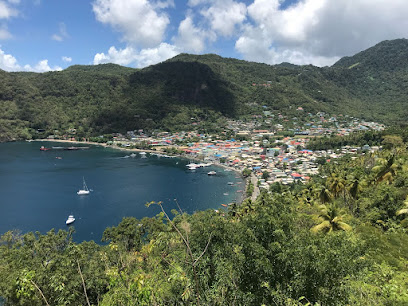
Fond Doux Eco Resort
Explore the beauty of St. Lucia at Fond Doux Eco Resort, where luxury meets sustainability in a historical paradise.

Anse Chastanet
Experience the breathtaking beauty and luxury of Anse Chastanet, a hidden gem in St. Lucia offering adventure, relaxation, and stunning coastal views.

Treetop Adventure Park
Discover the exhilarating heights of Treetop Adventure Park in St. Lucia, where stunning views and thrilling zip line courses await every adventurer.
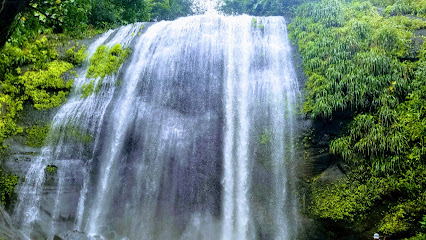
Rainforest Adventures St. Lucia
Uncover the biodiversity of St. Lucia's rainforest while zip-lining through lush canopies and exploring nature's wonders at Rainforest Adventures.
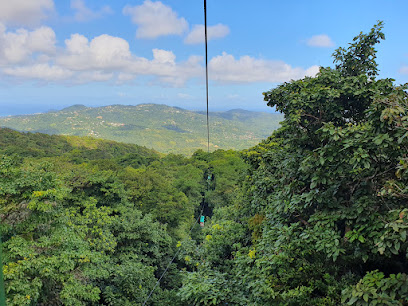
Stonefield Villa Resort
Experience luxury and tranquility at Stonefield Villa Resort, nestled in the heart of St. Lucia's breathtaking landscapes.

Golden Taste Restaurant
Discover the flavors of St. Lucia at Golden Taste Restaurant, where local ingredients meet Caribbean culinary traditions for an unforgettable dining experience.
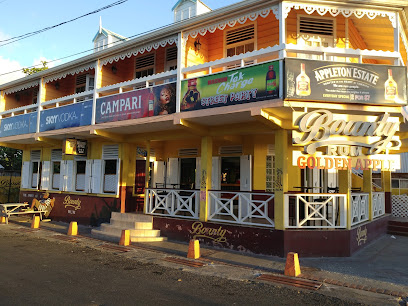
Fort Rodney
Explore Fort Rodney in St. Lucia: A historic fort with stunning views, rich history, and beautiful landscapes awaits you.
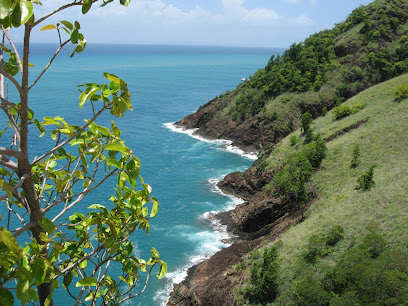
Anse Mamin Beach
Discover Anse Mamin Beach in St. Lucia, a serene escape with pristine sands, crystal-clear waters, and a perfect blend of adventure and relaxation.
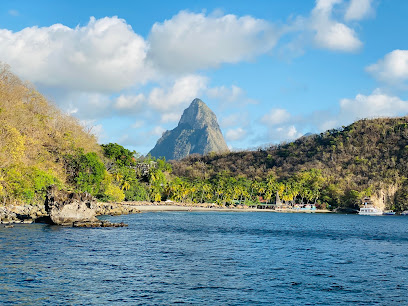
Unmissable attractions to see
Plage des Salines
Experience the breathtaking beauty of Plage des Salines, a tropical paradise in Martinique with golden sands and crystal-clear waters, perfect for relaxation and adventure.
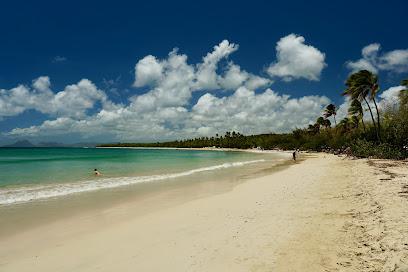
Rodney Bay Marina
Explore Rodney Bay Marina, a Caribbean gem where adventure meets relaxation, offering stunning views, vibrant nightlife, and thrilling water activities.
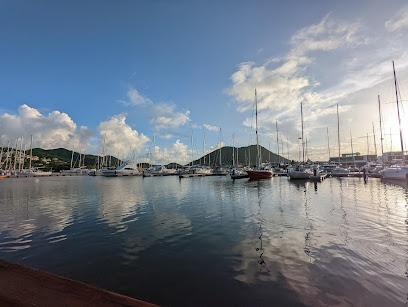
Daren Sammy Cricket Ground.
Discover the vibrant atmosphere of Daren Sammy Cricket Ground, a top tourist attraction in Gros Islet, St. Lucia, where cricket and local culture unite.

Savanna of Petrifications
Explore the enchanting Savanna des Pétrifications, a unique wildlife park in Martinique, showcasing stunning petrified trees and diverse ecosystems in a serene setting.
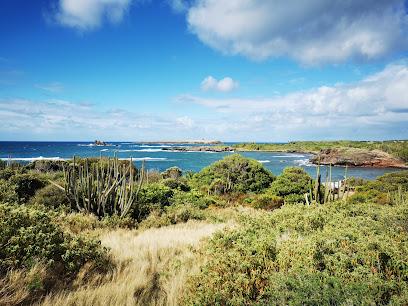
Saint Lucia National Trust
Explore the enchanting landscapes and rich history of Saint Lucia National Trust, a cultural gem on Pigeon Island, perfect for heritage and nature enthusiasts.
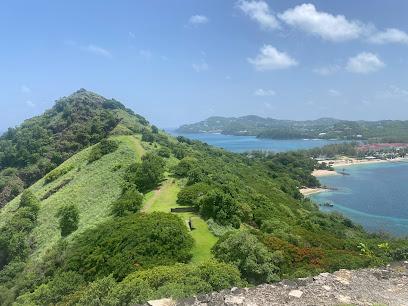
Ultra Lounge
Discover the lively Ultra Lounge in Rodney Bay, St. Lucia, where delicious cuisine and vibrant nightlife come together for an unforgettable experience.
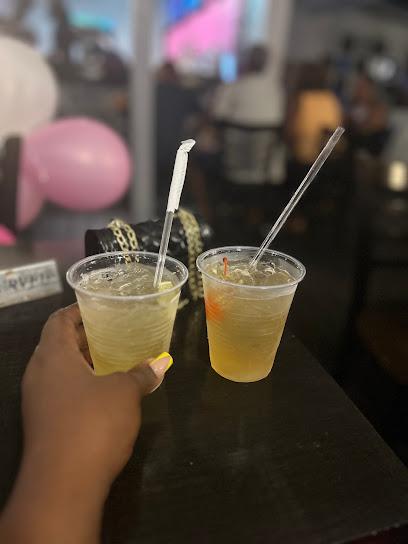
The Minor Basilica of the Immaculate Conception (Cathedral)
Explore the architectural beauty and spiritual significance of the Minor Basilica of the Immaculate Conception in Castries, a must-see for every traveler in St. Lucia.
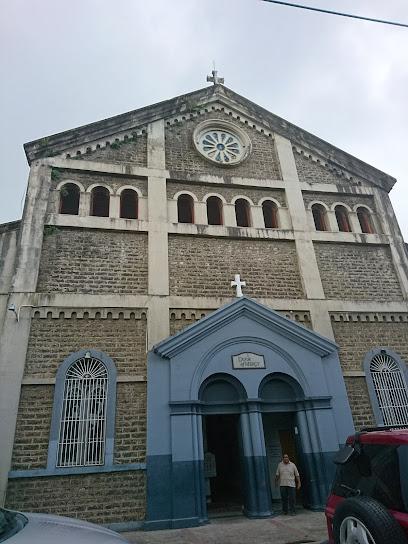
Treetop Adventure Park
Explore the exhilarating heights of Treetop Adventure Park in St. Lucia, where adventure meets nature in a breathtaking tropical paradise.
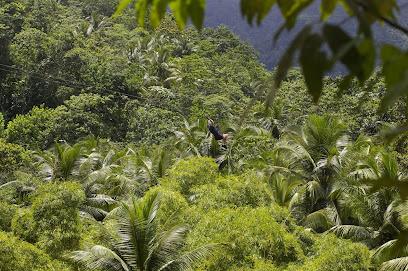
Rainforest Adventure
Discover the lush beauty of Rainforest Adventure in St. Lucia, where thrilling zip lines meet stunning nature trails and local crafts.
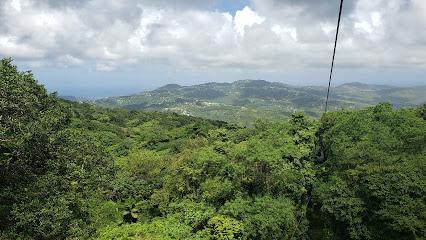
St. Lucia Distillers Ltd
Experience the rich flavors and heritage of rum at St. Lucia Distillers Ltd, a must-visit destination for tourists in Roseau.
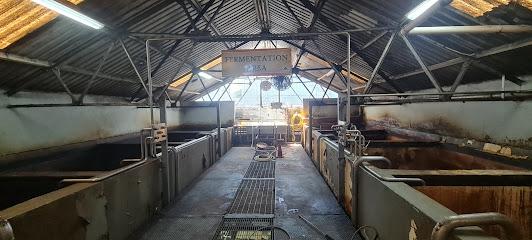
Fort Rodney
Explore the historic Fort Rodney on Pigeon Island, a stunning attraction with breathtaking views and rich colonial history.
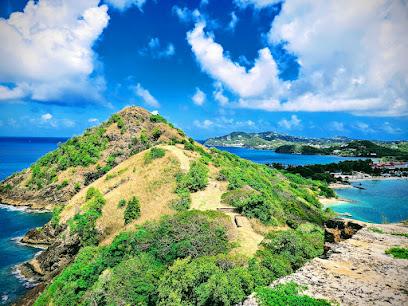
Marigot Bay
Experience the breathtaking beauty of Marigot Bay in St. Lucia, a serene paradise perfect for relaxation, adventure, and vibrant local culture.
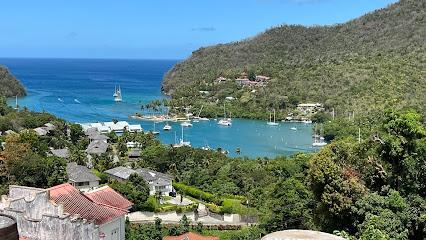
Reduit Beach
Experience the breathtaking beauty and vibrant culture of Reduit Beach, a tropical paradise in St. Lucia perfect for relaxation and adventure.
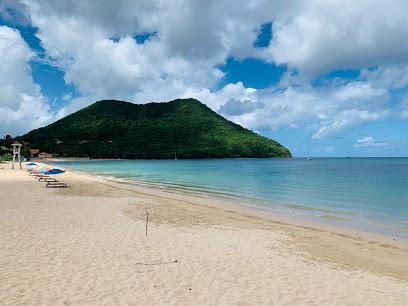
Sea Spray Cruises Ltd.
Discover the beauty of St. Lucia from the water with Sea Spray Cruises Ltd. at Rodney Bay Marina, a premier destination for unforgettable island adventures.
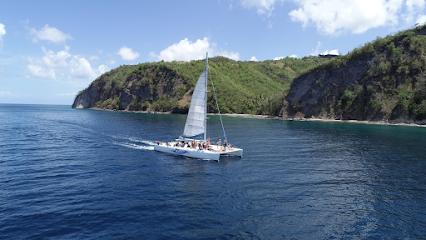
Hackshaw's Boat Charters St. Lucia
Experience the beauty of St. Lucia from the water with Hackshaw's Boat Charters - offering fishing, sightseeing, and whale watching tours.
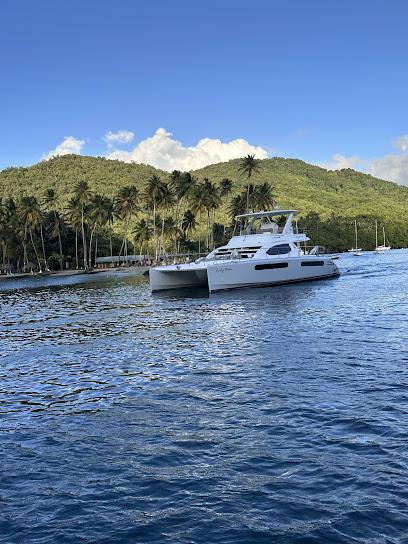
Essential places to dine
Spinnakers Beach Bar And Carvery
Experience vibrant Caribbean flavors at Spinnakers Beach Bar And Carvery in Gros Islet - where every meal comes with breathtaking ocean views.
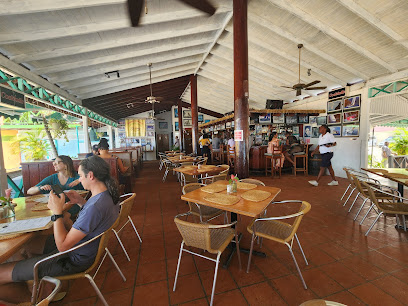
The Coal Pot Restaurant
Experience exquisite seafood dining at The Coal Pot Restaurant in Castries, St. Lucia – where local flavors meet breathtaking ocean views.
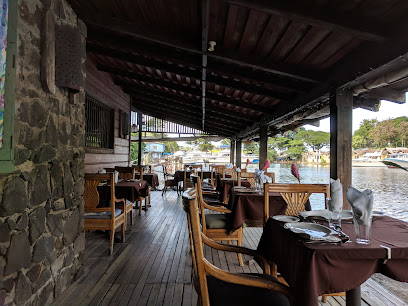
Big Chef Steakhouse
Experience culinary excellence at Big Chef Steakhouse in Rodney Bay - where every steak tells a story.
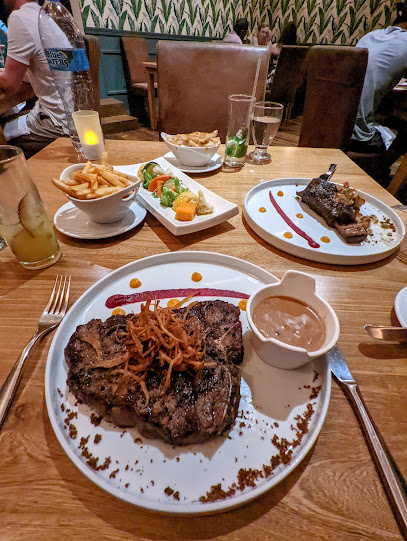
The Beacon Restaurant
Discover exquisite Caribbean flavors at The Beacon Restaurant in Palmiste, St. Lucia—where every meal is accompanied by breathtaking ocean views.
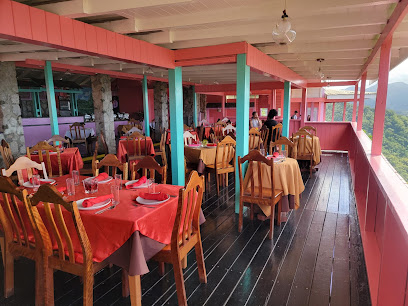
Matthew's Rooftop Restaurant
Experience the best of St. Lucia’s cuisine at Matthew's Rooftop Restaurant with breathtaking views over the Caribbean Sea.
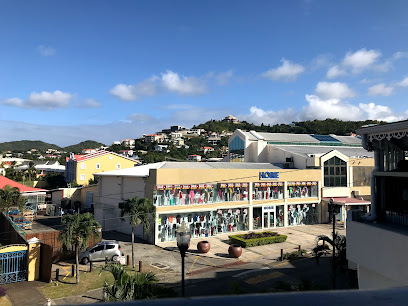
Naked Fisherman Restaurant
Experience exquisite seafood dining with breathtaking ocean views at Naked Fisherman Restaurant in St. Lucia.
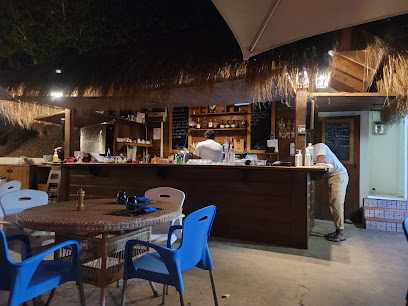
Flavours Of The Grill
Discover authentic Caribbean flavors at Flavours Of The Grill in Gros Islet – a must-visit dining experience for tourists seeking local delights.
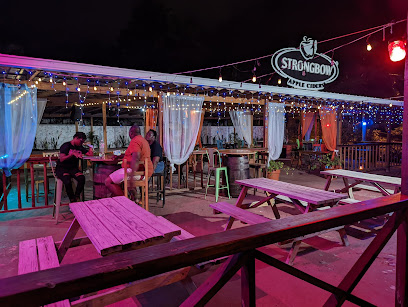
Island Breeze Bar & Grill
Experience authentic Caribbean cuisine at Island Breeze Bar & Grill in St. Lucia—where every meal comes with stunning ocean views.
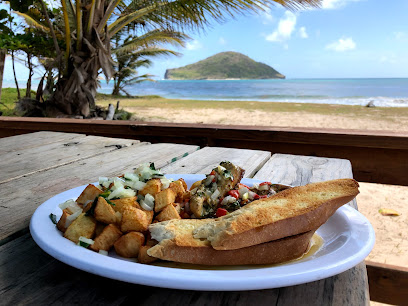
The Reef Beach Cafe
Discover the flavors of St. Lucia at The Reef Beach Cafe—where delicious food meets breathtaking ocean views on Sandy Beach.

Dukes Place
Discover the flavors of St. Lucia at Dukes Place - where local cuisine meets vibrant ambiance in the heart of Bay Street.
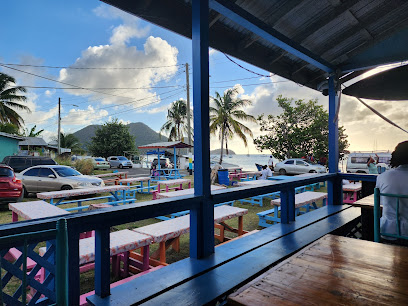
Orlando's Restaurant & Bar
Experience authentic Creole cuisine at Orlando's Restaurant & Bar in Soufriere, St. Lucia - where every dish tells a story.
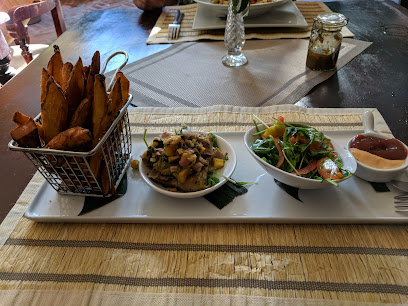
Fedo's
Discover authentic Caribbean flavors at Fedo's in Palmiste, St. Lucia - where every meal tells a story.
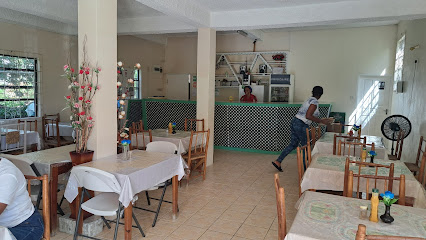
Pink Plantation
Discover Pink Plantation: A delightful restaurant in St. Lucia blending exquisite cuisine with breathtaking views in an enchanting setting.
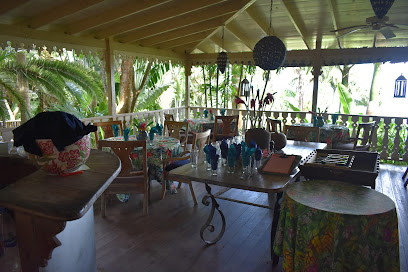
Golden Taste Restaurant
Experience authentic Caribbean flavors at Golden Taste Restaurant in Gros Islet - a culinary delight for all visitors.
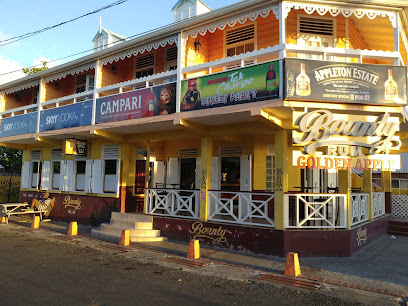
Petit Peak Restaurant
Experience authentic St. Lucian cuisine at Petit Peak Restaurant in Palmiste—where flavor meets stunning views.

Markets, malls and hidden boutiques
Baywalk Shopping Mall
Explore the vibrant Baywalk Shopping Mall in Rodney Bay—your ultimate destination for shopping, dining, and local culture in St. Lucia.

La Place Carénage
Discover the vibrant shopping and dining scene at La Place Carénage, the heart of Castries, where local culture meets Caribbean charm.
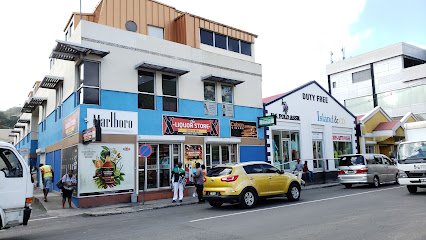
Gablewoods Shopping Mall
Discover shopping bliss at Gablewoods Shopping Mall in Choc, St. Lucia, where local and international brands meet vibrant dining and entertainment.
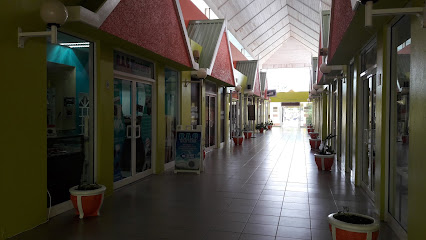
Duty Free Pointe Seraphine Shopping Complex
Experience the ultimate shopping adventure at Duty Free Pointe Seraphine Shopping Complex in St. Lucia, where luxury meets local charm.
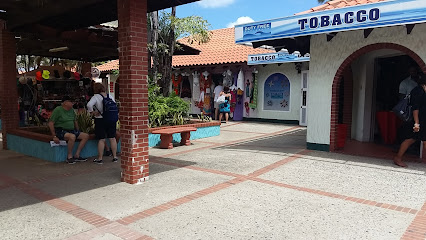
Diamonds International Pointe Seraphine
Explore exquisite jewelry at Diamonds International Pointe Seraphine in Castries, St. Lucia, where luxury meets local charm.
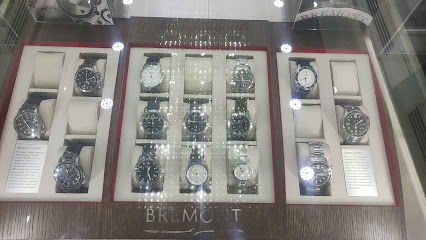
Excellent Stores
Explore a world of shopping at Excellent Stores in Gros Islet, where local culture meets diverse products for every taste.
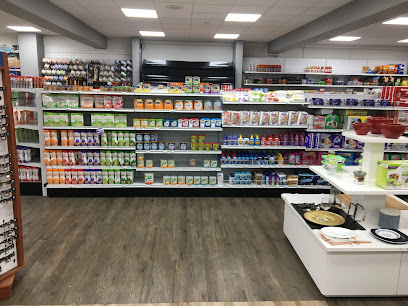
Franzette's Boxx- Customized Gifts in St. Lucia
Explore St. Lucia's charm with customized gifts at Franzette's Boxx, your go-to gift shop for unique souvenirs and delightful gift baskets.

Sea Island Cotton Shop
Explore the Sea Island Cotton Shop in Rodney Bay for exquisite St. Lucian cotton goods, celebrating the island's craftsmanship and culture.
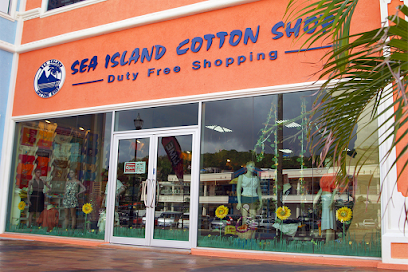
Hobie
Discover Hobie in St. Lucia, where coastal charm meets stylish clothing, perfect for your island adventures.

Hang Ten
Explore Hang Ten in Castries, St. Lucia, a vibrant clothing store offering stylish beachwear and island-inspired fashion for every traveler.

Order Shop St. Lucia
Discover local flavors and essentials at Order Shop St. Lucia, your go-to grocery store in Castries for fresh produce and unique souvenirs.

Cost U Less Boutique
Discover unique apparel at Cost U Less Boutique, the go-to clothing store in Vieux Fort, St. Lucia, for stylish souvenirs and local fashion.

PorshLyfe
Explore PorshLyfe in St. Lucia for trendy women's clothing that captures the essence of Caribbean style and elegance.

Scott's Underground Boutique
Explore Scott's Underground Boutique in Castries for unique local and international fashion that captures the spirit of St. Lucia.

Irie Blue
Explore Irie Blue in Rodney Bay for unique souvenirs, local crafts, and vibrant clothing that capture the spirit of St. Lucia.
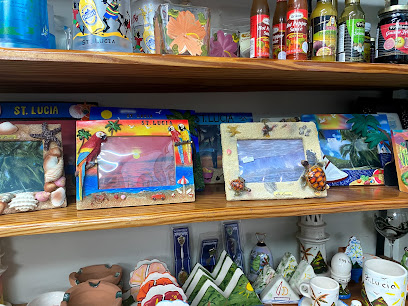
Essential bars & hidden hideouts
Spinnakers Beach Bar And Carvery
Discover the vibrant flavors of St. Lucia at Spinnakers Beach Bar And Carvery, offering a delightful blend of Caribbean cuisine and breathtaking ocean views.
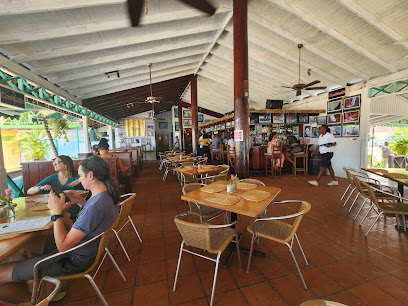
Island Breeze Bar & Grill
Experience the essence of Caribbean dining at Island Breeze Bar & Grill, where every meal comes with a view of St. Lucia's beautiful coastline.
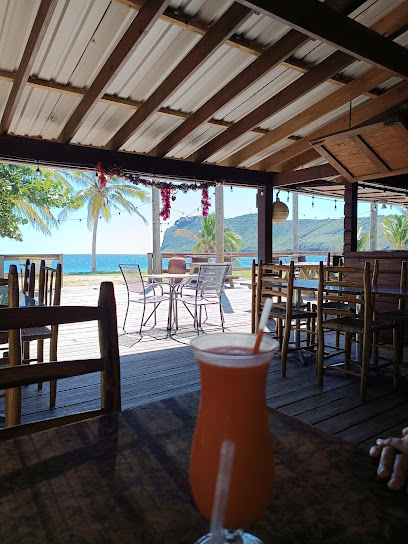
Golden Taste Restaurant
Discover the flavors of the Caribbean at Golden Taste Restaurant in Gros Islet, St. Lucia, where traditional cuisine meets vibrant hospitality.

Si-Si Zebe/Prudy's Escape
Discover the vibrant nightlife of Gros Islet at Si-Si Zebe/Prudy's Escape, where delicious cocktails and a welcoming atmosphere await.

Frydays
Experience the flavors of St. Lucia at Frydays, a beloved restaurant in Gros Islet known for its authentic Caribbean dishes and welcoming atmosphere.
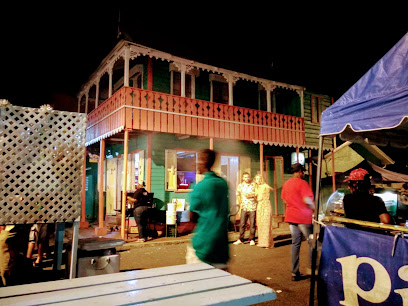
Friday Night Street Party
Join the Friday Night Street Party in Gros Islet for a lively celebration of St. Lucian culture with music, food, and local crafts in a vibrant atmosphere.
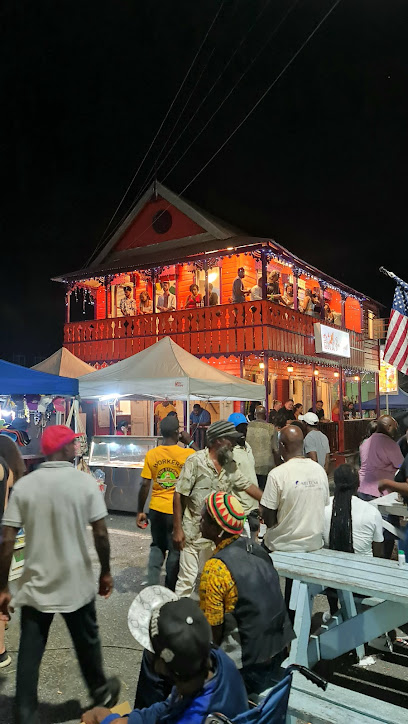
Irie Bar
Discover the vibrant Irie Bar in Gros Islet, a local favorite for refreshing cocktails and lively entertainment in St. Lucia.
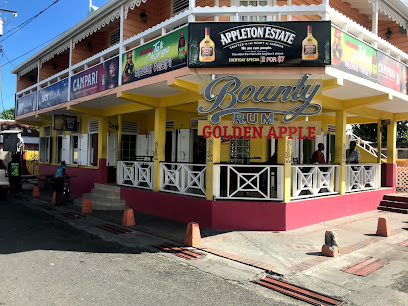
Castro's Pub
Discover the lively Castro's Pub in Gros Islet, St. Lucia - a vibrant bar offering local drinks, music, and unforgettable experiences.
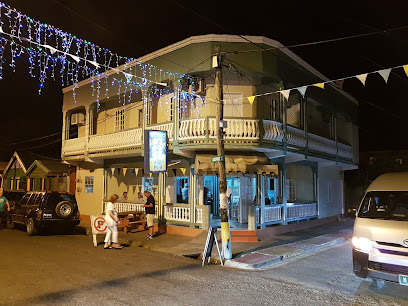
Verve
Experience the vibrant nightlife and delicious cuisine at Verve in Gros Islet, St. Lucia - your go-to bar and restaurant for unforgettable memories.
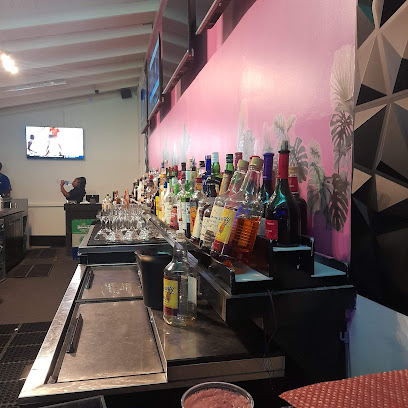
La Vie Bar & Lounge
Experience the lively atmosphere and exquisite cocktails at La Vie Bar & Lounge in Rodney Bay, a must-visit for St. Lucia travelers seeking nightlife.

Pandarosa Bar (Merrick)
Experience the vibrant atmosphere of Pandarosa Bar in Gros Islet, where refreshing drinks and Caribbean hospitality meet.
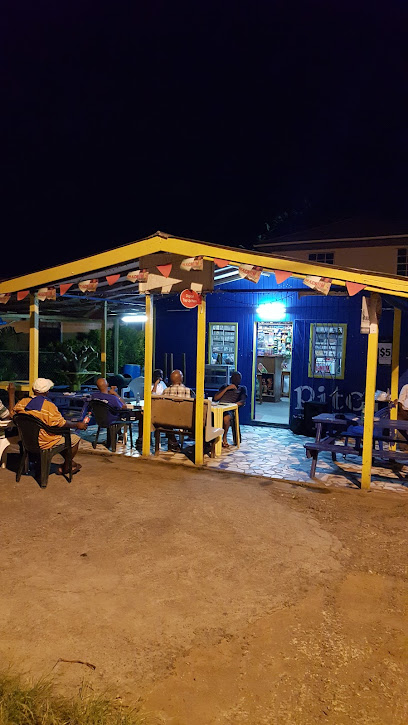
The Village Gate
Experience the vibrant nightlife and local flavors at The Village Gate, a must-visit bar in Gros Islet, St. Lucia.
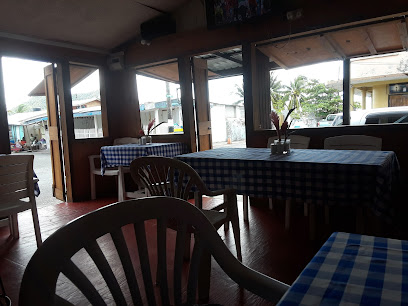
Humble Bee
Discover the essence of St. Lucia at Humble Bee, a cozy bar and restaurant in Gros Islet, offering local flavors and a vibrant atmosphere for all visitors.
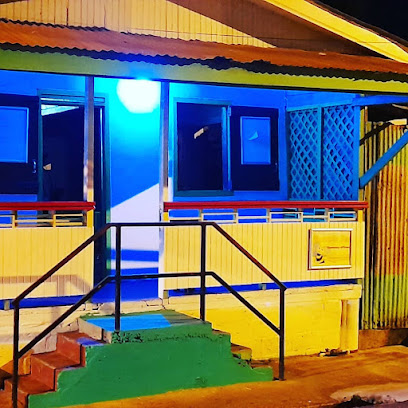
Cane Bar
Discover the enchanting Cane Bar at La Baie de Silence, where tropical cocktails meet breathtaking Caribbean views for an unforgettable experience.
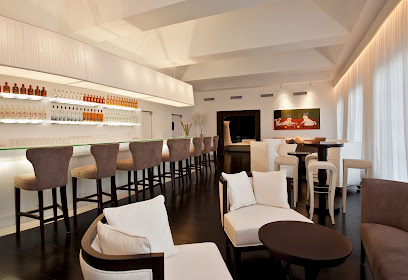
Boardwalk Bar
Discover the vibrant nightlife and local culture at Boardwalk Bar in Rodney Bay, St. Lucia's premier social hub.
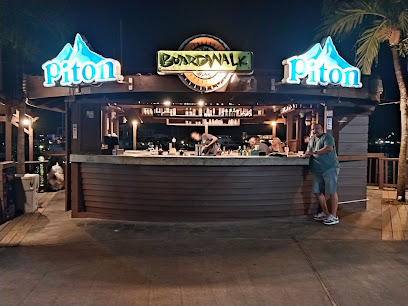
Local Phrases
-
- HelloBonjou
[bon-ju] - GoodbyeOrevwa
[o-rev-wa] - YesWi
[wee] - NoNon
[non] - Please/You're welcomeTanpri
[tan-pree] - Thank youMèsi
[meh-see] - Excuse me/SorryEskize mwen
[es-kee-zay mwen] - How are you?Kijan ou ye?
[kee-jan oo yay] - Fine. And you?Byen. E ou menm?
[byen. ay oo menm] - Do you speak English?Eske ou pale angle?
[es-ke oo pal ang-lay] - I don't understandMwen pa konprann
[mwen pa kon-pran]
- HelloBonjou
-
- I'd like to see the menu, pleaseMwen ta renmen wè meni a, tanpri
[mwen ta ren-men way meh-nee ah, tan-pree] - I don't eat meatMwen pa manje vyann
[mwen pa manj vyan] - Cheers!Santé!
[san-tay] - I would like to pay, pleaseMwen ta renmen peye, tanpri
[mwen ta ren-men pay-yay, tan-pree]
- I'd like to see the menu, pleaseMwen ta renmen wè meni a, tanpri
-
- Help!Sekou!
[seh-koo] - Go away!Alé!
[ah-lay] - Call the Police!Rele Polis!
[ray-lay po-leece] - Call a doctor!Rele yon doktè!
[ray-lay yon dok-tay] - I'm lostMwen pèdi
[mwen pay-dee] - I'm illMwen malad
[mwen mal-ad]
- Help!Sekou!
-
- I'd like to buy...Mwen ta renmen achte...
[mwen ta ren-men ashtay] - I'm just lookingMwen jis gade
[mwen zhee gah-day] - How much is it?Konbyen li ye?
[kon-byen lee yay] - That's too expensiveSa twò chè
[sa twa shay] - Can you lower the price?Eske ou ka ba pri a?
[es-ke oo ka ba pree ah]
- I'd like to buy...Mwen ta renmen achte...
-
- What time is it?Ki lè li ye?
[kee lay lee yay] - It's one o'clockLi enpòtan
[lee en-poh-tan] - Half past (10)Demi (disè)
[deh-mee dee-zay] - MorningMaten
[mah-ten] - AfternoonApremidi
[ah-pray-mee-dee] - EveningSwè
[sweh] - YesterdayYè
[yay] - TodayJodi a
[jo-dee ah] - TomorrowDemen
[deh-men] - 1Yon
[yon] - 2De
[day] - 3Twaz
[twaz] - 4Kat
[kaht] - 5Senk
[sank] - 6Sis
[sees] - 7Sèt
[set] - 8Wit
[weet] - 9Nèf
[nef] - 10Disè
[dee-zay]
- What time is it?Ki lè li ye?
-
- Where's a/the...?Ki kote yon/la...?
[kee koh-tay yon/la] - What's the address?Ki adwès la?
[kee ad-way la] - Can you show me (on the map)?Eske ou ka montre mwen (sou kat la)?
[es-ke oo ka mon-tray mwen (soo kat la)] - When's the next (bus)?Ki lè pwochen (bis la)?
[kee lay pwosh-en (bees la)] - A ticket (to ....)Yon tikè (pou ....)
[yon tee-kay (poo)]
- Where's a/the...?Ki kote yon/la...?
History of Dauphin
-
Before European colonization, the area now known as Dauphin was inhabited by the indigenous Arawak and later the Carib peoples. These early settlers established communities, engaged in fishing, and developed agriculture, leaving behind artifacts and evidence of their complex societies. Archaeological findings in the region include pottery shards, tools, and petroglyphs that offer a glimpse into their daily lives and spiritual practices.
-
In the mid-17th century, French settlers arrived in Saint Lucia, including the area of Dauphin. The French established plantations and small settlements, naming the area 'Dauphin' in honor of the heir to the French throne. The region's fertile soil and strategic location made it an important site for agriculture and trade. The French influence is still evident today in the local dialects, place names, and cultural practices.
-
During the 18th and 19th centuries, Dauphin became a significant center for sugar production. The establishment of large sugar plantations led to the importation of African slaves who labored under harsh conditions. The legacy of slavery is a pivotal part of Dauphin's history, with many descendants of enslaved Africans still residing in the area. Ruins of old sugar mills and plantation houses can still be found, serving as a somber reminder of this period.
-
In 1778, the Battle of Cul de Sac took place near Dauphin as part of the larger conflict between the British and French for control over Saint Lucia. This battle was a significant event in the island's history, with both sides seeking to dominate the lucrative sugar trade. The French ultimately emerged victorious, reinforcing their hold on the island until the British captured it again in the early 19th century.
-
The abolition of slavery in 1834 led to significant social and economic changes in Dauphin. Freed slaves began to establish their own communities and engage in various forms of agriculture beyond sugar. This period saw the rise of small-scale farming and the diversification of crops, which helped shape the modern landscape of the area. Many of today's local traditions and cultural practices have roots in this era of newfound freedom and self-sufficiency.
-
In the 20th and 21st centuries, Dauphin has seen various developments, including improvements in infrastructure, education, and tourism. The area is known for its vibrant cultural heritage, including traditional music, dance, and festivals. Sites such as the Dauphin Creole Heritage Center celebrate the rich history and cultural contributions of the community. Visitors can explore historical landmarks, participate in local events, and experience the unique blend of African, French, and indigenous influences that define Dauphin's identity.
Dauphin Essentials
-
Dauphin is located on the northeastern coast of Saint Lucia. The nearest airport is George F. L. Charles Airport in Castries, approximately 15 kilometers away. From the airport, you can take a taxi or arrange for a private transfer. Alternatively, Hewanorra International Airport is about 70 kilometers to the south, and you can hire a taxi or rent a car to reach Dauphin, which typically takes around 1.5 hours by road.
-
Dauphin is a small area, and many attractions can be explored on foot. For longer distances, local minibuses (known as 'bus') are available and are an affordable option. Taxis are also readily available but make sure to agree on the fare beforehand as they may not use meters. Car rentals are a convenient option if you plan to explore other parts of the island. Always drive cautiously as roads can be narrow and winding.
-
The official currency is the Eastern Caribbean Dollar (XCD). US dollars are widely accepted, but it's advisable to carry some local currency for smaller establishments. Credit cards are accepted in most hotels, restaurants, and shops, though smaller vendors may prefer cash. ATMs are available but may not be as frequent as in larger towns, so it's wise to have enough cash on hand.
-
Dauphin is generally safe for tourists, but it's important to remain cautious. Avoid walking alone at night and stay in well-populated areas. Petty theft can occur, so keep an eye on your belongings and avoid displaying valuables openly. Specific high-crime areas targeting tourists are not prevalent, but it is always best to stay vigilant and aware of your surroundings.
-
In case of an emergency, dial 911 for immediate assistance. There are medical facilities available in nearby Castries for more serious health issues. It is recommended to have travel insurance that covers medical emergencies. Local pharmacies can provide over-the-counter medications for minor health concerns.
-
Fashion: Do wear light, casual clothing suitable for tropical climates. Avoid overly revealing attire especially when visiting religious sites. Religion: Do respect local customs and traditions. Some areas may require modest dress. Public Transport: Do have small change ready for bus fares. Don't eat or drink on public transport. Greetings: Do greet people with a friendly 'hello' or 'good day'. A handshake is also common. Eating & Drinking: Do try local dishes and accept food offerings graciously. Don't refuse hospitality as it can be considered impolite.
-
To experience Dauphin like a local, visit the local markets where you can buy fresh produce and handmade crafts. Engage with locals who are often friendly and willing to share insights about their culture. Don't miss visiting the Dauphin Turtle Watch, where you can observe nesting sea turtles. For a unique experience, explore the nearby nature trails and beautiful beaches that are less frequented by tourists.
Trending Landmark in Dauphin
-
Sandals Grande St. Lucian
-
Saint Lucia
-
Sugar Beach, a Viceroy Resort
-
Adventure Tours St Lucia
-
Saint Lucia National Trust
-
Naked Fisherman Restaurant
-
Morne Coubaril Historical Adventure Park
-
Fond Doux Eco Resort
-
Anse Chastanet
-
Treetop Adventure Park
-
Rainforest Adventures St. Lucia
-
Stonefield Villa Resort
-
Golden Taste Restaurant
-
Fort Rodney
-
Anse Mamin Beach
Nearby Cities to Dauphin
-
Things To Do in Castries
-
Things To Do in Gros Islet
-
Things To Do in Rodney Bay
-
Things To Do in Marigot Bay
-
Things To Do in Anse la Raye
-
Things To Do in Praslin
-
Things To Do in Canaries
-
Things To Do in Micoud
-
Things To Do in Soufrière
-
Things To Do in Malgretoute
-
Things To Do in Choiseul
-
Things To Do in Laborie
-
Things To Do in Vieux Fort
-
Things To Do in Georgetown
-
Things To Do in Chateaubelair







